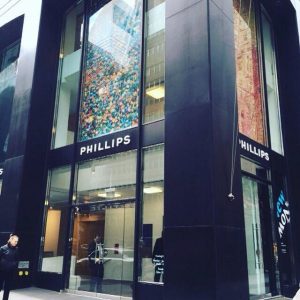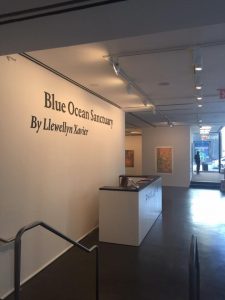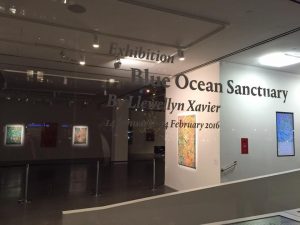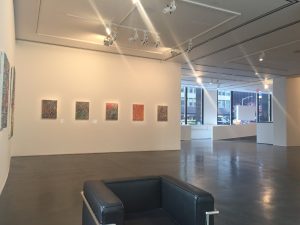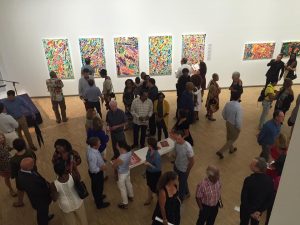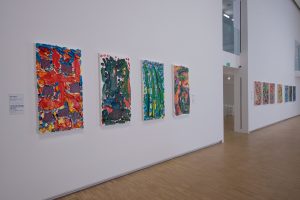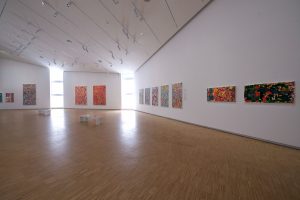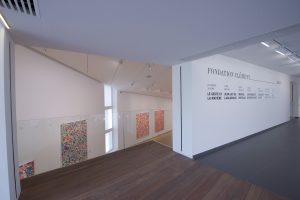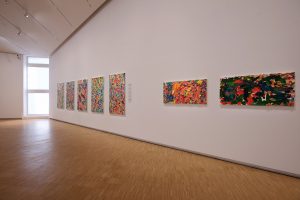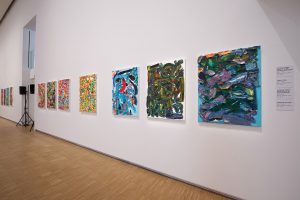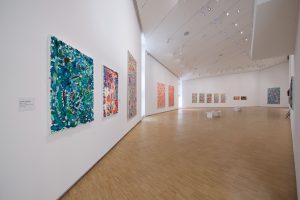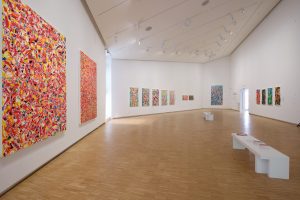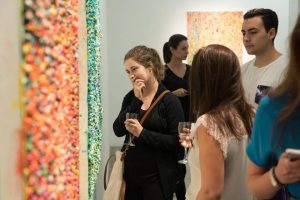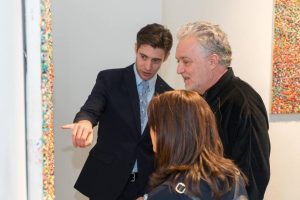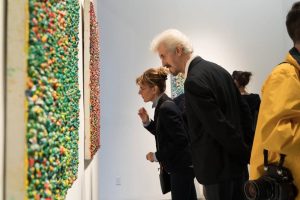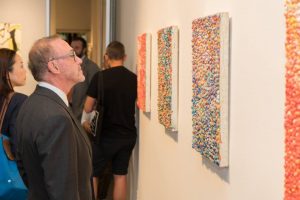
Artist Statement
Growing up in abject poverty on the tiny Caribbean island of Saint Lucia and going to school without shoes and having to walk eight miles to and from school each day, meant that I was seldom on time for roll call. The school consisted of one single room. The Headmaster’s desk was at one end of the room on a makeshift platform. I left at the age of fourteen, soon after embarking on a wild and riotous, hedonistic global quest ostensibly to find my true self, eventually landing at a silent monastery in Montreal, Canada. Prior to my stint as a Cistercian Monk I lived with my spiritual director, the Archbishop of Halifax in his magnificent palace, until I was politely asked to vacate my room to make way for Pope John Paul II, his staff, and the retinue of servants who were visiting Canada.
After a year of what was possibly the most miserable and unhappy time of my life, I went out of the Monastery for a month of discernment, a period in which would-be monks go back into the world to discern whether monasticism is their true calling. The Archbishop and I hired a luxury yacht and sailed the Southern Caribbean before returning to the Monastery. Soon after I returned, I got up one morning, packed my very small suitcase, took a taxi to the airport, and left without saying a word to anyone. I went to England, got married to Christina, and resumed my career as an Artist.
A career that started with me painting what is unquestionably the most awful “Airport Art” imaginable, was followed by a series of collaborations with John Lennon, James Baldwin and the infamous Jean Genet. My greatest ambition at that time was not to be a successful artist, but to shock Genet; I almost succeeded!
The work in this exhibition is the result of fifty years of observing the behaviour of paint, the juxtaposition of colours in close proximity to one other, creating texture and attempting to understand the paradox of form.
I would like to dedicate the exhibition to my wife Christina, whose opinion on art I greatly value. She has a brilliant, clear understanding of the art being created now.
Most significantly, I would like to thank the Chairman and CEO of Phillips, Edward Dolman, for finding me, Brittany Lopez Slater, Head of International Exhibitions, and last but most certainly not least, my Manager, Graham Storey-Macintosh, who keeps me firmly grounded.
Llewellyn Xavier
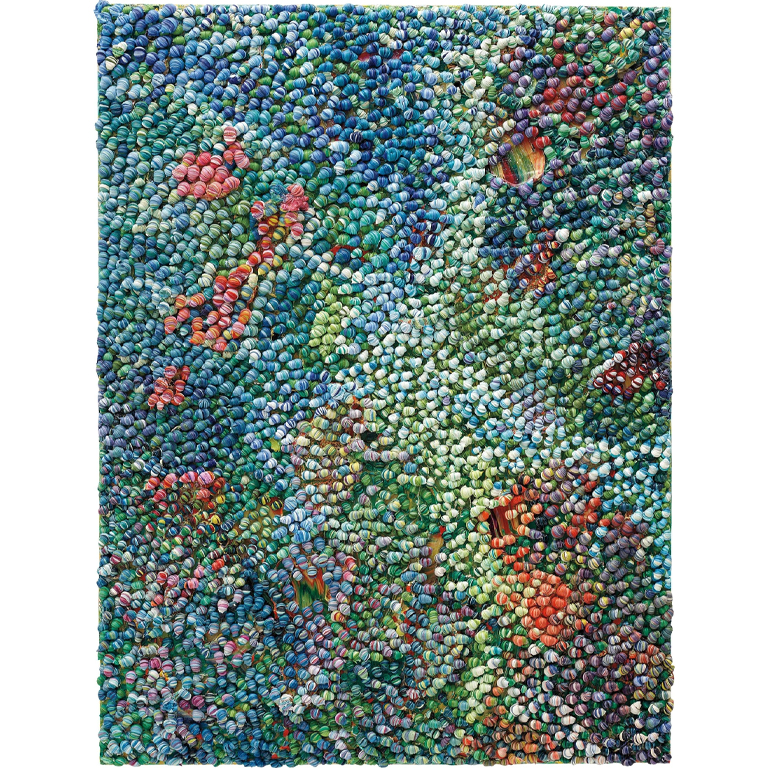
REVIEWS
“The artist of St. Lucia - Llewellyn Xavier is St. Lucia’s most famous and innovative artist.”
Don Philpott, Author
"Xavier's own response to what Edward Lucie-Smith describes as the threat to the fragile ecology of the island, is indeed the reaction of a son returning to his native land in the spirit of [Wifredo] Lam, [Aimé] Césaire and [Alejo] Carpentier, true pioneers in the cultural and political emancipation of the Caribbean. As the unique aspects of the St. Lucian environment , continue to guide and impact the evolution of his imagery, then, Xavier stands as a vital force in the on-going dialogue of globalism and locality, cultural tourism and cultural sovereignty in the art of the Caribbean."
Dr. Lowery Stokes Sims
"Llewellyn is one of the greatest artists ever to emerge from the Caribbean and we are honored to be collaborating with him on this very exciting selling exhibition"
Edward Dolman, CEO and Chairman of Phillips
メトロポリタンやスミソニアンにも作品(上)を展示しているセントルシア人アーティスト、ルウェリン・グザヴィエのアポイント制スタジオがここに。
Harper's Bazaar, Japan
“…and when you get a taste of his work you will want to see more - which is when you make an appointment to view more of his collection and enter the heavenly heights of his magnificent home.”
Jo Foley - Ideal Home and Lifestyle, U.K.
"Llewellyn Xavier, St. Lucia’s pre-eminent visual artist has followed a career path whose twists and turns many West Indian creators will recognise. Though a number of Llewellyn’s paintings appear at the first to be abstract, they all contain a figurative element, sometimes deeply buried in accumulated layers of paint. The best interpretative approach is in fact through basic subject matter, rather than through apparent style. The smoothest transition from earlier to later work is represented by a sequence of paintings where the subject is an opulent vase of flowers. The earliest of these paintings resemble the flower-pieces Van Gogh produced in Paris between 1886 and 1888, before his move to Arles. That is, they are boldly colourful, but still have the remnants of 19th century artistic convention."
Edward Lucie-Smith
“I dropped by St. Lucia’s artist/environmentalist, Llewellyn Xavier–whose studio was in a magnificent mansion, surrounded by Bougainvillaea and laid out in crisp, minimal lines, a dazzling white palace of art above the gorgeous cactus-dotted coastline of Cap Estate.”
Tony Perrottet - The Sunday Times, London
“Llewellyn Xavier communicates the sensuality and un–spoilt beauty of the island through his art, making him one of St. Lucia’s best ambassadors.”
Debra Percival - The Courier, Europe
Gallery Representation
Blue Ocean Sanctuary Phillips 450 Park Avenue New York 14th January to 14th February 2016
Blue Ocean Sanctuary by Llewellyn Xavier
The Mating Dance Of The Unicorn UNIX Gallery, New York 7th September to 21st October 2017
The Mating Dance Of The Unicorn at UNIX Gallery
Mucciaccia Art, Rome, Cortina D’Ampezzo, Singapore, London, New York
UNIX Gallery, 507 W 27th St, New York, NY 10001, United States
Principal Exhibitions
2019
- Unix Gallery, New York, USA *
- Fondation Clement, Martinique, France
- Unix Gallery, Art Aspen, Aspen
- Unix Gallery, Art Central, Hong Kong
2018
- Unix Gallery, Art Miami, Miami
- Unix Gallery, Artmarket, San Francisco
- Unix Gallery, Palm Beach Modern & Contemporary
2017
- Unix Gallery, New York, USA *
- Fondation Clement, Martinique, France *
- University of Texas at Austin *
2016
- Unix Gallery, Art Miami, Miami
- Unix Gallery, New York (Future Anesthetics)
- Phillips, New York (Blue Ocean Sanctuary) *
2009
- Caribbean Art Gallery, Saint Lucia, West Indies *
2007
- Albemarle Gallery, London, England (the launching of Llewellyn Xavier: His Life and Work) *
2005
- Whitechapel Gallery, London, England
1996
- 1996 Harmony Hall, Jamaica, West Indies
1994
- Mutual Life Art Gallery, Jamaica, West Indies *
- The Contemporary Print Show, London, England
1993
- Barbados Museum, Barbados, West indies *
- Patrick Cramer Gallery, Geneva, Switzerland *
- New York Design Center, New York, USA *
1982
- Nova Scotia College of Art and Design, Halifax, Canada
1979
- Camera on Mass. Ave., Boston, USA, Conceptual, photographing Military Parade on Massachusetts Ave. *
- Piedmont College, North Carolina, USA, parallel to a lecture by Alex Haley, (author of Roots) *
1977
- Afro/American Historical Museum, Philadelphia, USA*
- Anamon Art Gallery, Toronto, Canada *
- Howard University, Washington D.C., USA *
1976
- Mazelow Gallery, Toronto, Canada *
- The National Archives, Ottawa, Canada *
- Afro/American Historical Museum, Detroit, USA *
- Howard University, Washington D.C., USA *
1975
- Art Gallery of Ontario, Toronto, Canada
1974
- Mazelow Gallery, Toronto, Canada *
1973
- The Oxford Gallery, Oxford, England, Curator: Edward Lucie-Smith, Art Critic, Art Historian, Author
- I.P.G. United Nations, New York, USA
- Gallery III, Montreal, Canada *
- Saratoga Gallery, New York, USA
1972
- The Museum of Modern Art, New York, USA
- The Studio Museum, New York, USA
- The Whitechapel Art Gallery, London, England *
- Third British International Print Bienniale, Bradford, England
1971
- The Commonwealth Institute, London, England
- D.M. Gallery, London, England, Curator: Sir Roddy Llewellyn *
- organised by Penguin Books and Jonathan Cape
- Oxford University, Oxford, England *
- The Round House, London, England *
- Sussex University, Sussex, England *
- The Textile Museum of Canada
Works in selected Permanent Collections
- The Smithsonian Institution, Washington, D.C.
- The Metropolitan Museum of Art, New York
- The Museum of Modern Art, New York
- The Studio Museum, New York
- The American Museum of Natural History, New York
- Art Gallery of Ontario, Toronto, Canada
- Howard University, Washington, D.C.
- The Fitzwilliam Museum, Cambridge, England
- The Victoria and Albert Museum, London
- The Ulster Museum, Northern Ireland
- The Walker Art Gallery, Liverpool, England
- The Wolverhampton Art Gallery, England
- Sussex University, Sussex, England
- Oxford University, Oxford, England
- The National Gallery, Jamaica
- The Barbados Museum, Barbados
- The State Department, USA
- UNESCO
- Fondation Clément, France
- University of Texas at Austin


